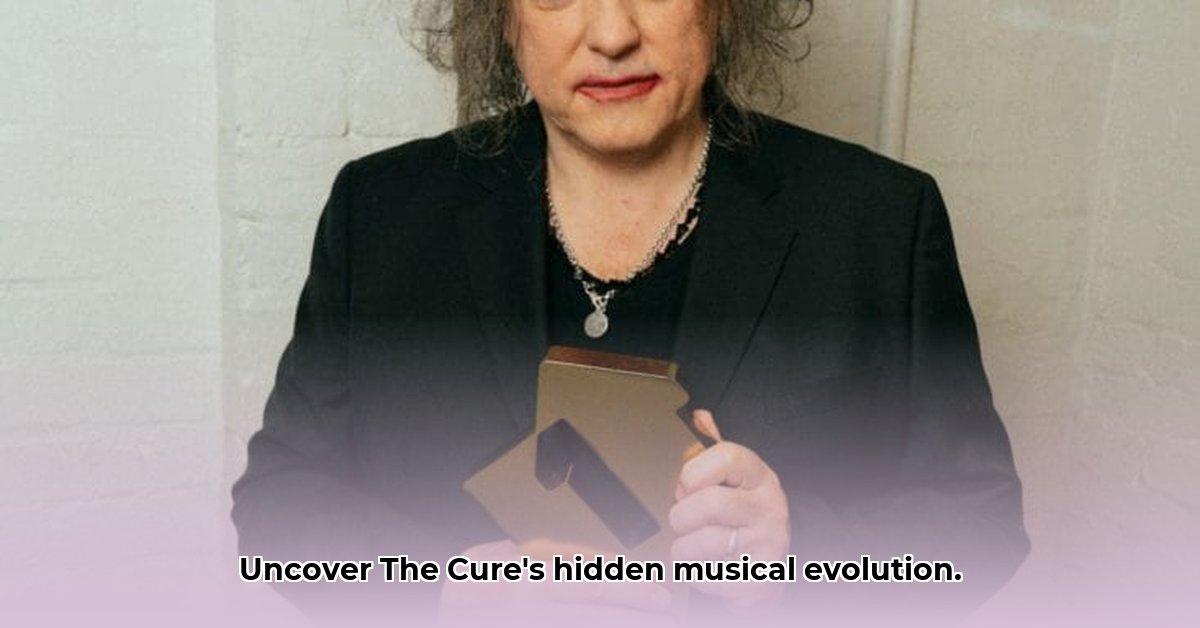
Die Musiek Van The Cure: 'n Reis Deur Tyd en Stijl
The Cure. The name itself evokes images of dark, brooding music, melancholic lyrics, and Robert Smith's signature hair. But The Cure are so much more than just a gothic icon. Their musical journey is an incredible tale of transformation, experimentation, and enduring success – a journey that has captivated many fans while leaving others scratching their heads. Let's delve into the evolution of this legendary band's sounds, from their post-punk beginnings to their more pop-oriented years. Their lasting impact is undeniable, but how did they achieve such a diverse and successful career spanning decades?
Die Vroeë Jare: Post-Punk en Kontroversie
The band's emergence in the late 1970s coincided with the bleakness of the post-punk era. They quickly developed a unique sound: a blend of dissonance and raw emotion. The song "Killing An Arab" exemplifies this, yet sparked considerable controversy that continues to be debated today. Their debut album, Three Imaginary Boys, showcased the band's burgeoning potential: dark, pensive songs that captivated a niche audience. Even then, however, the seeds for future stylistic shifts were already sown. Did their early experimentation lay the groundwork for their future success? The evidence suggests a strong correlation.
Die Gotiese Fase: Die Omhelsing Van Duisternis
The 1980s brought a significant turning point: The Cure fully embraced the gothic style. Albums like Pornography and Disintegration stand as pillars of the genre, featuring Robert Smith's distinctive vocals and the band's introspective, melancholic compositions. Songs about love, loss, and alienation became classics. Consider "Pictures of You" or "A Forest"— instantly recognizable hits that embodied the emotional intensity of the movement. Was this music too gloomy for some? Perhaps. But its power is undeniable, setting the tone for countless other bands. How did their embrace of gothic themes resonate with the cultural zeitgeist of the time?
Die Pop-Wending: 'n Omstrede Evolusie?
The Cure, however, were not content to remain confined to a single style. A major shift came with albums like The Head on the Door, incorporating more melodic elements and a pop sensibility. This transition divided fans and critics alike. Some lauded the band's experimentation, while others lamented the perceived dilution of their dark artistry. Nevertheless, this evolution yielded some of their most enduring and commercially successful hits. "Friday I'm in Love," for instance, became synonymous with upbeat pop, a stark contrast to their earlier work. Was this a betrayal of their original sound, or a natural progression? The answer, like much of The Cure's discography, remains open to interpretation. How did this shift in style impact their critical reception and commercial success? This is a key question to consider.
Volgehoue Sukses en Aanhoudende Eksperimentering
The Cure continued to evolve throughout the 1990s and beyond, demonstrating a remarkable creative longevity. They blended alternative rock with a variety of influences while retaining that core emotional depth. Later albums, while perhaps less consistently critically acclaimed, still offer compelling moments. Their creative output shows remarkable consistency; could any other band have covered such a diverse stylistic range while maintaining a devoted fanbase? The answer speaks to the power of their songwriting.
Die Erfenis van The Cure
Looking back, The Cure's discography offers a fascinating study in stylistic evolution. Their music remains relevant, and their impact on alternative rock and goth is undeniable. From dark post-punk beginnings to commercially successful pop anthems, The Cure's journey reflects the band's remarkable ability to adapt and experiment, leaving behind a rich and complex legacy. Their successes, and the debates they sparked, are all part of the story. What is the lasting impact of their musical innovation and consistent adaptability?
Kritiese Ontvang: 'n Vergelykende Kyk
| Album | Vrystelling Jaar | Metacritic telling | Belangrike Stijlelemente | Opvallende Liedjies |
|---|---|---|---|---|
| Three Imaginary Boys | 1979 | N/A | Early post-punk, raw, experimental | "Jumping Someone Else's Train", "Accuracy" |
| Pornography | 1982 | 88 | Gothic rock, somber, intensely melancholic | "A Strange Day," "The Hanging Garden" |
| Disintegration | 1989 | 90 | Gothic rock, melancholic, atmospheric, more melodic | "Prayers for Rain," "Lovesong" |
| The Head on the Door | 1985 | 84 | Transition to a more melodic and accessible sound | "In Between Days," "Close to Me" |
| Wish | 1992 | 78 | Alternative rock, more polished production, pop sensibility | "Friday I'm in Love," "High" |
(Note: Metacritic scores may not be available for all albums. This table is illustrative.)
How did The Cure's mental health affect their musical evolution?
Key Takeaways:
- The Cure's musical journey is inextricably linked to the band members' emotional landscapes.
- Their exploration of themes like love, loss, and existential angst resonated profoundly with audiences.
- Internal conflicts and personal struggles, notably Lol Tolhurst's alcoholism, significantly impacted their creative output and evolution.
- Despite setbacks, their resilience and creative adaptability enabled continued innovation and success.
- The band's sonic shifts reflect their evolving mental and emotional states, resulting in a rich and complex discography.
(Note: This analysis is based on widely available information and critical interpretations of their work.)